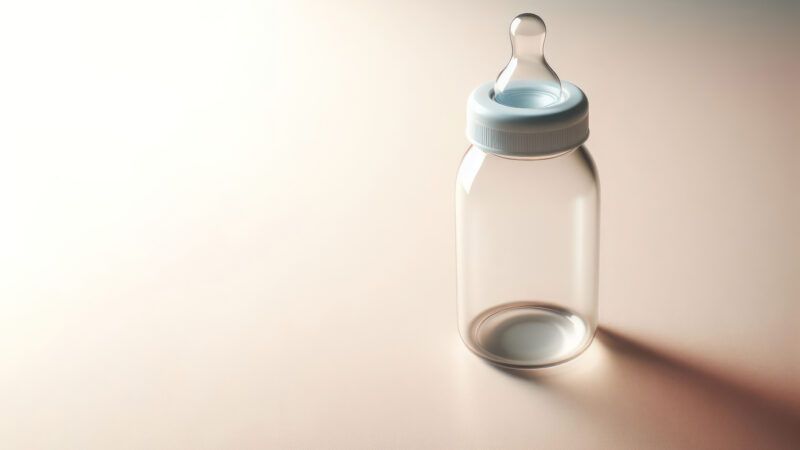Baby Bottle Manufacturers Sued for Not Warning Customers That Their Plastic Bottles Could Leak Microplastics
Not only are microplastics essentially unavoidable, but the alleged harm they pose has been wildly overblown.

Two of the largest baby bottle manufacturers, Handi-Craft and Philips North America, are facing separate class-action lawsuits for allegedly failing to warn parents that their baby bottles could leak microplastics, despite the fact that no plastic material exists that does not release microplastics under any kind of heat and pressure.
According to the lawsuits, the plaintiffs were "unable to determine…whether the Products are truly a safe choice and free of microplastics," unless information on the packaging informed them that microplastics come from plastic. Such an inference, according to the plaintiffs, would require possessing "specialized knowledge, skill, experience, or education in plastic composition."
The two baby bottle manufacturers use polypropylene, a material that garnered mass favor following the bisphenol A (BPA) ban from the Food and Drug Administration (FDA) in 2012. Over 82 percent of all baby bottles sold worldwide are polypropylene, which is much safer when compared to most other materials. Clean Production Action, a nonprofit advocacy group promoting safer chemicals, named polypropylene as one of the "most benign" plastic chemicals in its Plastics Scorecard report. The material is also labeled a safe option by the American Academy of Pediatrics.
The class-action lawsuits, however, allege the two companies failed to warn customers that the bottles released microplastics that could potentially interfere with babies' digestive, reproductive, and immune systems. Customers felt misled by the "BPA free" label found on their products, which allegedly led them to think that the products were free of harmful chemicals and would not leak any microplastics upon being heated up.
The BPA label, however, was accurate—as the baby bottles, again, were made of polypropylene. The material has become ubiquitous among plastic containers that come into contact with food or drinks precisely because it is safer and less toxic than other kinds of plastics.
Nonplastic alternatives like silicone, stainless steel, and glass do exist too. But they carry their own sets of problems, such as increased cost, poor durability, environmental damage, and even lead contamination (something we have more ample evidence of its toxic effects than we do for plastic).
The impetus for the FDA's BPA ban did not even stem from public safety concerns. The agency cited market abandonment as the reason for the prohibition, as most companies by 2012 had already ditched the material—not because of government force but because of public pressure.
In Handi-Craft's motion to dismiss the class-action complaint, the company defended not issuing a warning because of the "ubiquitous" nature of microplastics. Similarly, in Philips North America's motion to dismiss, the company argued the plaintiffs had failed to quantify just how many microplastics the bottles supposedly leaked and whether that amount could be dangerous.
Just because microplastics are unavoidable does not mean they are harmful. "The numbers associated with these tiny bits of plastic will be quite large," wrote Mike Pesca in the May 2024 issue of Reason. "The conclusions we should draw from the huge counts are not quite nil, but are many orders of magnitudes less significant than the media panic over nanoplastics we're swimming in."


Show Comments (27)